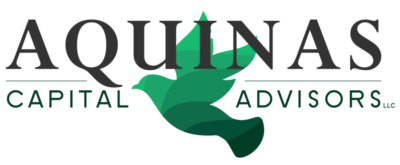A note from Charles Schwab talking all things retirement this month:
When it’s time to make the shift from saving for retirement to living off your savings, what’s the best way to create a steady stream of income that lasts as long as you do?
“If you want your portfolio to go the distance, it helps to have a plan,” says Rob Williams, vice president of income planning at the Schwab Center for Financial Research. It’s not just a matter of selling a few assets and pocketing the proceeds, he says. You need to think about how your withdrawals will work with other sources of income—such as dividends, interest, and Social Security—and consider how your asset allocation and tax situation will shift over time.
Here are three common challenges you might face once you start tapping your portfolio for income.
Challenge 1: Changes in your spending needs
So much of retirement planning relies on assumptions. How much income you’ll need. How much you’ll earn from your investments each year. How long you’ll live. “You can make educated guesses, but they’re just that—guesses,” Rob says. “And that makes it difficult to know how long your money will really last.”
For example, if you need more income than you anticipated—for health care costs or other needs—how will that affect the longevity of your savings? If you rerun the numbers and discover your savings are likely to fall short, how do you make ends meet without sacrificing your lifestyle in retirement?
It’s also possible that your portfolio may perform better than expected. In that case, you may be able to spend more. Still, it can be a challenge to know when it’s time to increase your spending.
“There are plenty of things you can do to accommodate a significant change,” Rob says. “But the challenge becomes figuring out what you should do—and that’s where it makes sense to seek outside help.”
Challenge 2: Ups and downs in the market
If there’s one thing retirees fear most, it’s a market downturn. “There’s nothing scarier than watching your portfolio plummet 20% or more in a single year, especially if you’re retired.” Rob says.
At the same time, you don’t want to reduce your exposure to stocks so much that you inhibit future growth potential. Fortunately there are ways to insulate your savings from the effects of a major market decline while still leaving room for growth.
One approach is to keep a year’s worth of cash in a relatively safe, liquid account for spending, move a portion of your savings into investments that tend to fare better in a down market, and invest the rest in stocks.
By doing this, you’re giving yourself a cushion—which can help you avoid having to liquidate investments when the market is down. “Otherwise, you’ll have to sell a larger quantity of investments in a down market to meet your spending needs in those years, leaving you with fewer shares and limiting your portfolio’s ability to recover down the road,” says Rob.
Challenge 3: Minimizing taxes in retirement
One of the hardest parts of tapping your portfolio for retirement income is figuring out how to withdraw the funds in a tax-smart way. As you approach your first withdrawal, you may be asking:
- Which assets should I tap first?
- How can I minimize my tax bill?
These questions go hand in hand because withdrawals from most accounts will trigger some sort of tax liability.
To take advantage of tax-deferred growth, advisors often suggest that you tap taxable accounts first, then tax-deferred accounts. “It’s conventional wisdom to let tax-deferred accounts—like your traditional IRA or 401(k)—grow until RMDs kick in,” says Rob. “This can result in lower taxes in the early years of retirement, but it may cause a jump in your tax bill later when you start to withdraw the money and pay ordinary income tax on it.” However, a recent study by the Schwab Center for Financial Research found that drawing down tax-deferred and taxable accounts simultaneously before you reach RMD age may help investors avoid a tax spike in future years, when RMDs begin, or due to a change in tax law.
The RMD reality
Many retirees are surprised by the size of their RMDs, especially as they age. Here’s a look at RMDs for accounts of various sizes.
| Total tax-deferred account balances | RMD required at age: | ||||
| 72 | 75 | 80 | 85 | 90 | |
| $500,000 | $19,966 | $23,650 | $30,837 | $39,209 | $47,185 |
| $1,000,000 | $39,932 | $47,300 | $61,675 | $78,417 | $94,369 |
| $1,500,000 | $59,898 | $70,950 | $92,512 | $117,626 | $141,554 |
Source: RMD Calculator. Assumes a birth date of 01/01/1949 and 6% average annual returns. The example is hypothetical and provided for illustrative purposes only. RMDs are subject to ordinary income tax rates. Those turning 70½ before 2020 will still need to take their RMDs using the pre-SECURE Act RMD tables.
For many investors, it makes sense to tap Roth IRAs last because they grow tax-free and aren’t subject to RMDs. “Since these withdrawals won’t add to your taxable income for the year, you may also want to consider using Roth IRA funds to cover larger one-off expenses in retirement—like travel or home-improvement projects,” says Rob. “In terms of the flexibility they offer, Roth IRAs stand alone.”
Depending on your needs and goals, other tactics (like tax-loss harvesting) may also help you manage your withdrawals tax-efficiently.
Don’t go it alone
Creating a lasting retirement-income plan requires a fair deal of planning, organization, and oversight to achieve optimal results. But you don’t have to figure it out on your own.
“From traditional investment advisors to technology-based solutions, there are plenty of places to turn for help,” Rob says. “The important thing to remember is that the sooner you get a handle on your retirement-income plan, the more time you’ll have to make adjustments to help ensure your savings can go the distance.”
Important Disclosures
Aquinas Capital Advisors LLC is not affiliated with Charles Schwab. The information provided here is for general informational purposes only and should not be considered an individualized recommendation or personalized investment advice. The investment strategies mentioned here may not be suitable for everyone. Each investor needs to review an investment strategy for his or her own particular situation before making any investment decision.
All expressions of opinion are subject to change without notice in reaction to shifting market conditions. Data contained herein from third party providers is obtained from what are considered reliable sources. However, its accuracy, completeness or reliability cannot be guaranteed.
Examples provided are for illustrative purposes only and not intended to be reflective of results you can expect to achieve.
(0517-ZEPE)

